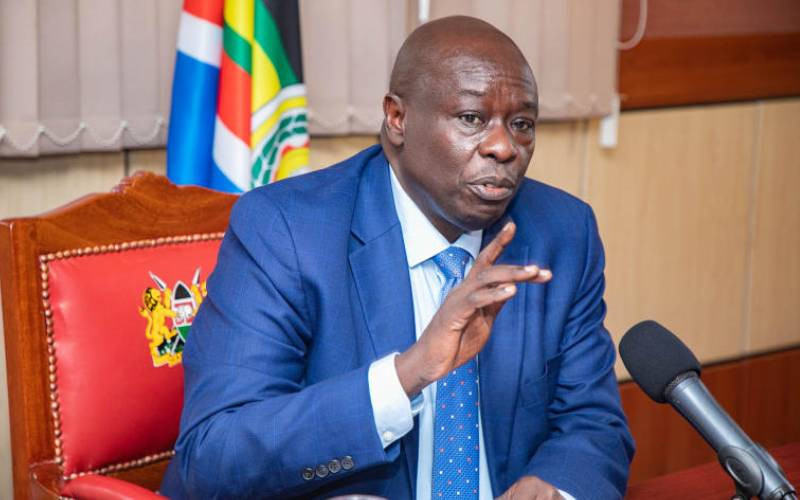
On July 1 2024, the European Union-Kenya Free Trade Agreement (Economic Partnership Agreement) entered into force.
The EPA agreements remain the most emblematic of Kenya’s enthusiastic embrace of trade liberalisation and acceptance of the inevitable tide of trade reciprocity between the global North and South states.
Free Trade Agreements have become a tool of choice in the country’s quest for market expansion.
The entry of the EPAs into force provides an opportunity to not only evaluate their effectiveness in market preservation for Kenya, but also to clarify the logic of free trade agreements.
As the new EPA agreement kicks off, three trends are already evident as outcomes of the broader context of global trade re-alignments.
First, the Kenya-EU EPAs have delivered in preserving the European market. As data from the Observatory of Economic Complexity (OEC) shows, Kenya has doubled the value of its trade to the EU from $814 million in 2010 to $1.16 billion in 2022.
The other discernible trend in Kenya-European Union trade is the gradual (and mutual) reduction of Europe’s role as Kenya’s main trade partner. In 2010 for example, the EU accounted for 24 per cent of Kenya’s total exports. That percentage dropped to 21 in 2015 and further down to 15 in 2023.
One of the remarkable qualities of the EPAs is how they represent the changing structure of the North’s industrial states exports. There was a time when we would expect Europe to be selling to Africa (global South) engines and medicines while we sold them coffee, oil and tomatoes.
Times are changing and Spain and France, for example, are now leading global exporters of tomatoes. As such, over the course of the EPA agreement, Kenya-EU trade has witnessed the growing composition of Kenyan food imports from Europe.
In 2010, Kenya imported less than one per cent of wheat from the EU. In 2022, wheat was Europe’s second biggest export product to Kenya, at six per cent, after refined petroleum.
In 2010, Kenya did not import maize, animal food or edible preparations from Europe. In 2022, the country imported maize worth $12.6m, animal food worth $21.5m and edible preparations worth a whopping $40m from the EU.
The trend of growing food imports from Europe is of course a touchy affair for domestic producers. We must learn to see Europe as a formidable food producer and exporter.
There exist several potentials for Kenyan farmers in the EU- EPA arrangement.
For Kenya, her traditional exports to the EU have been vegetables, fruits, and cut flowers. For the food products, the EU, through its development assistance, is keen to engage in a series of capacity interventions for farmers. This includes compliance with EU standards.
Stay informed. Subscribe to our newsletter
For small-scale Kenyan farmers to leverage these potentials, there are several hurdles to overcome. These include inadequate financing and navigating the raft of processes to be export ready.
In terms of the export process, farmers have to be in compliance with the quality and compliance of EU standards, including a phytosanitary certificate.
By organising around groups, small scale farmers would have easy access to credit and grants, market information, and enhanced policy and regulatory compliances.
In terms of regulatory compliance, being organised stimulates better coordination with key government agencies such as the Kenya Plant Health Inspectorate Service (KEPHIS), which is responsible for seed certification, and phytosanitary certification.
Furthermore, these groups would co-share research and technology adoption costs to scale their reach and effectiveness in the EU market.
Other potentials for Kenyan farmers lie with the recent Kenya-UAE Comprehensive Economic Partnership Agreement that awaits ratification by Parliament.
To leverage on these opportunities, the ministries of Trade, Investments and Industry, and that of Agriculture, Livestock and Fisheries, should engage in sensitisation forums as well as putting policy interventions to expedite adoption and compliance with EPAs in the private sector.
Ultimately, the utility of free trade agreements is in how well they improve a country’s trade balance towards a surplus or reducing deficits.
First, the bilateral levels of trade between the two countries should be proximal. Secondly, the partner country should hold palpable export potential and third, ideally, Kenya should have as broad a range of export products to that country as possible.
On all three accounts, Kenya has held decently against the EU and thus EPAs have been mutually beneficial.
But while Kenya has a decent range of export products to the UAE, a potential Kenya-UAE FTA would raise questions about the likelihood of a potential FTA in narrowing down Kenya’s Sh3-billion-dollar trade deficit.
On the other hand, in the absence of AGOA, a possible FTA with the United States makes sense as it fulfills all these three conditions superbly.
And if we are to look east, I would go for Japan and India which, though not ideal in condition one, hold massive trade surplus against Kenya, they provide greater export potential in the promise and diversity of their imports from Kenya.
Elijah Munyi is an Associate Fellow at Mashariki Research and Policy Centre
 The Standard Group Plc is a
multi-media organization with investments in media platforms spanning newspaper
print operations, television, radio broadcasting, digital and online services. The
Standard Group is recognized as a leading multi-media house in Kenya with a key
influence in matters of national and international interest.
The Standard Group Plc is a
multi-media organization with investments in media platforms spanning newspaper
print operations, television, radio broadcasting, digital and online services. The
Standard Group is recognized as a leading multi-media house in Kenya with a key
influence in matters of national and international interest.
 The Standard Group Plc is a
multi-media organization with investments in media platforms spanning newspaper
print operations, television, radio broadcasting, digital and online services. The
Standard Group is recognized as a leading multi-media house in Kenya with a key
influence in matters of national and international interest.
The Standard Group Plc is a
multi-media organization with investments in media platforms spanning newspaper
print operations, television, radio broadcasting, digital and online services. The
Standard Group is recognized as a leading multi-media house in Kenya with a key
influence in matters of national and international interest.







